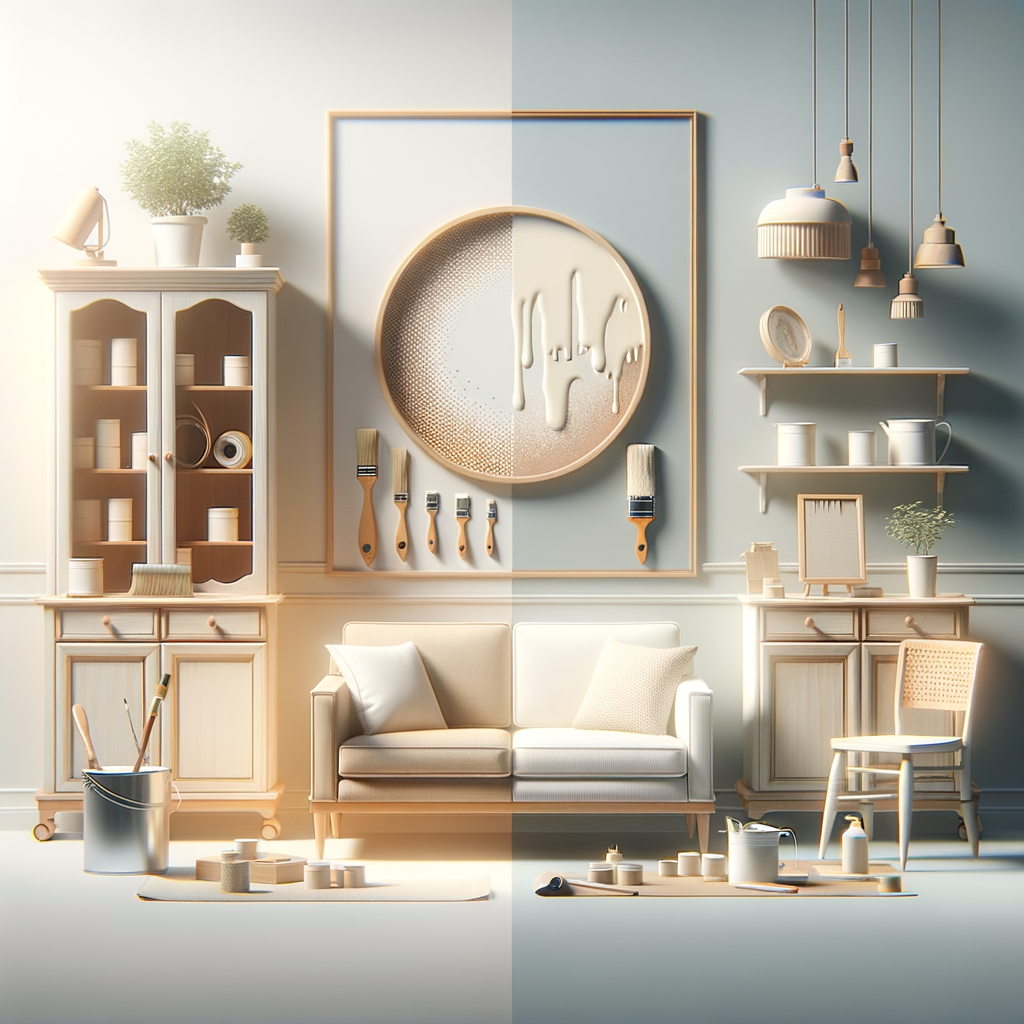Painting Techniques to Enhance Your Furniture’s Look

Painting Techniques to Enhance Your Furniture’s Look
Transforming your furniture with professional-looking paint finishes doesn't require years of experience — just the right techniques and tools. Whether you're a DIY enthusiast, a home decorator, or a tradesperson upgrading your client’s interiors, mastering a few key painting methods can elevate your projects with clean, durable, and visually stunning results.
In this guide, we will explore essential painting techniques for furniture, including preparation, brush and roller skills, specialised finishes, and expert tips to achieve a flawless, high-quality look.
Why Choose the Right Painting Techniques?
Using the correct application methods not only improves the aesthetic appeal but also enhances the durability of your furniture finish. Poor techniques can result in uneven surfaces, drips, or an unfinished look, which diminishes the value of your work. On the other hand, proper techniques will ensure a professional result and extend the lifespan of your furniture.
Preparing Your Furniture
Before applying any paint, proper preparation is crucial. Ensure the furniture is clean, smooth, and free from old finishes, grease, or dust.
Sanding
Sand the surface using medium grit sandpaper (around 120 grit), then finish with fine grit (220 grit) for a smooth base. This helps paint adhere better and reduces imperfections.
Cleaning
Wipe down with a tack cloth or damp cloth to remove dust. For heavily stained or greasy surfaces, use a mild detergent or specialist cleaner.
Priming
Apply a suitable primer to create an even base and improve paint adhesion. For unfamiliar or stained surfaces, a stain-blocking primer can prevent bleed-through.
Choosing the Right Paint
For furniture, consider the type of finish and durability you want. Common choices include:
- Emulsion paints for interior decorative furniture
- Furniture and cabinet paints designed for longevity
- Chalk paints for a matt, vintage look
- Lacquers or varnishes for a protective top coat
Check product specifications to ensure compatibility with your project.
Painting Techniques for a Flawless Finish
Applying paint correctly can make all the difference. Here are tried-and-true techniques:
Brush Painting
Ideal for detailed or intricate areas.
- Use high-quality, synthetic brushes for water-based paints or natural bristles for oil-based.
- Load the brush with a manageable amount of paint.
- Use long, smooth strokes following the grain to reduce brush marks.
- Feather out the edges to blend each stroke.
Roller Application
Best for flat surfaces and large areas.
- Use a small foam or fibre roller for furniture.
- Load the roller evenly and remove excess paint.
- Roll in a consistent pattern, maintaining even pressure.
- Apply multiple thin coats, allowing adequate drying between layers.
Spray Painting
Provides an ultra-smooth finish, especially for modern or sleek furniture.
- Use a suitable spray primer before the topcoat.
- Work in a clean, well-ventilated area.
- Maintain a consistent distance from the surface.
- Apply thin, even coats to avoid runs.
Specialised Finishes
For unique effects, such as distressing, antiquing, or adding texture, consider techniques like dry brushing, glazing, or adding wax overlays.
Tips for Professional Results
- Always sand lightly between coats for better adhesion.
- Use painter’s tape to protect edges and glass areas.
- Work in well-ventilated conditions to avoid paint fumes and ensure fast drying.
- Patience is key: allow sufficient drying time before applying additional coats or handling.
Comparing Popular Furniture Paints
Below is a comparison table of popular paints suitable for furniture projects:
| Product Name | Finish | Durability | Best For | Price |
|---|---|---|---|---|
| Cynnal Furniture Paint | Matt | Excellent | Vintage or distressed furniture | ££ |
| Cynnal Chalk Paint | Matte | Good | Rustic, shabby chic styles | £ |
| Cynnal Satin Hybrid | Satin | Very good | Modern, sleek finishes | £££ |
Choosing the right product depends on your project style, surface, and desired finish. Review product datasheets and user reviews for additional insights.
Final Thoughts
Mastering furniture painting techniques can significantly enhance your craftsmanship and the aesthetic of your home or client’s space. Proper preparation, choosing appropriate tools, and applying the techniques outlined here will help you achieve a durable, professional-looking finish.
Ready to upgrade your furniture? Explore our range of paints, brushes, and finishing products and start your transformation today!
Explore all DIY home decor solutions at Cynnal and bring your furniture projects to life with confidence!